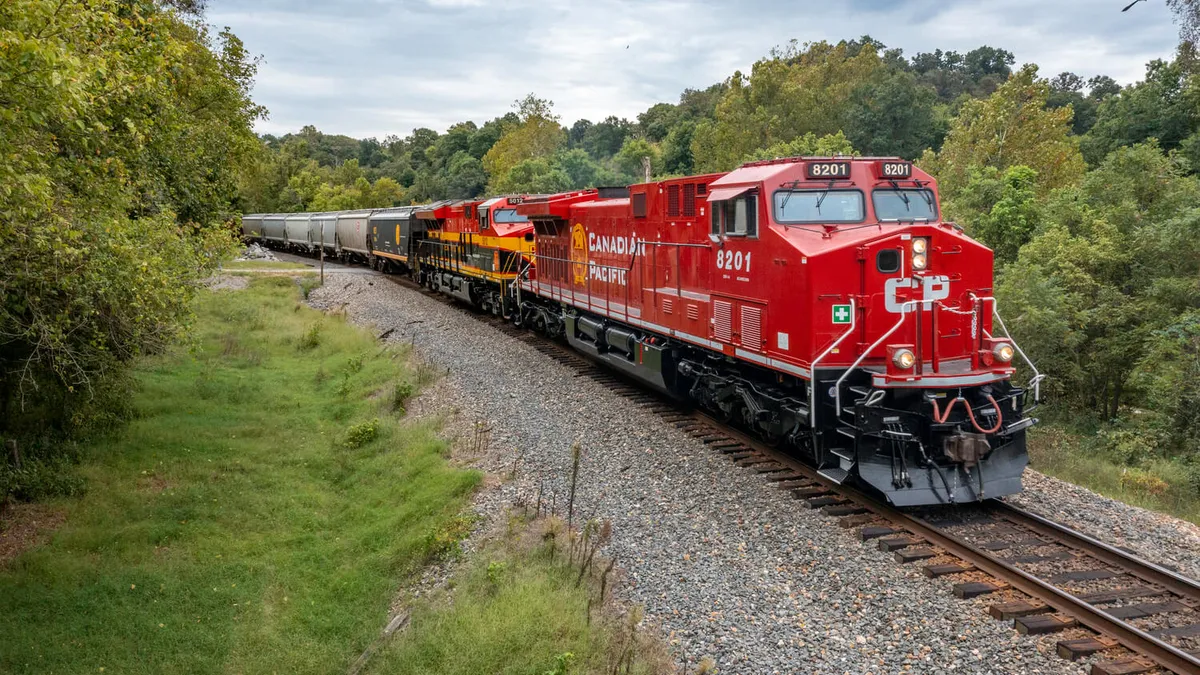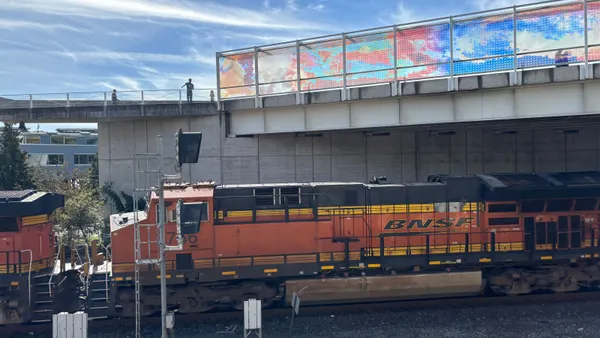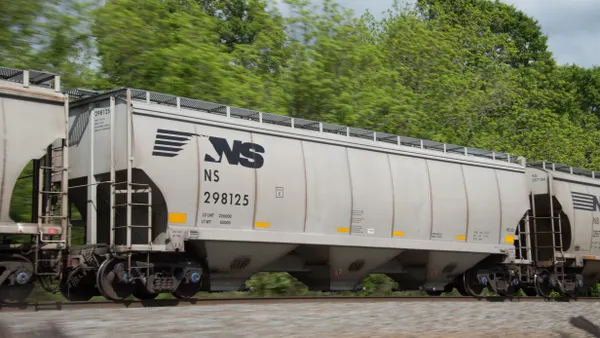Dive Brief:
- The Federal Railroad Administration on Tuesday issued a final rule requiring all Class I railroads to operate with a two-person crew, citing safety reasons.
- A second crewmember conducts safety functions that could be lost when reducing crew size to one person, the Department of Transportation said in a press release. The rail safety agency reviewed and considered over 13,500 written comments received during the 146-day comment period before making its determination.
- “Common sense tells us that large freight trains, some of which can be over three miles long, should have at least two crew members on board - and now there’s a federal regulation in place to ensure trains are safely staffed,” U.S. Transportation Secretary Pete Buttigieg said in a statement.
Dive Insight:
Federal regulators have been considering the issue for nearly two years, prompting controversy as rail industry executives and labor unions disagreed on the matter.
The ruling was submitted to the Federal Register on Tuesday and becomes effective 60 days after publication, according to the Department of Transportation.
Unions argued a second crew member is necessary to aid the conductor in spotting potential dangers and assist with emergencies. Meanwhile, railroads have said there are no proven safety benefits to two-person crews and that advancements in technology would boost safety without requiring additional labor.
The Association of American Railroads stood behind that position in a statement Tuesday, adding federal regulators “abandoned a similar rule in 2019 after failing to identify evidence to justify a safety need.”
“FRA is doubling down on an unfounded and unnecessary regulation that has no proven connection to rail safety,” AAR President and CEO Ian Jefferies said in a statement. “Instead of prioritizing data-backed solutions to build a safer future for rail, FRA is looking to the past and upending the collective bargaining process.”
The rule comes after years of increased scrutiny on railroad practices, as executive changes led to operating model shifts, then high-profile accidents and union negotiations shed a limelight on labor practices.
Although many Class I railroads already operate two-person crews, the Federal Railroad Administration said the final rule is necessary to establish a process for stakeholders to comment before the agency allows any railroad to operate with a one-person train crew. The agency also cited annual data from 2013 to 2022 — which it said showed a 41% increase in human-caused accidents — to justify the additional rules governing safety measures.
“Today’s final rule acknowledges the important role both crewmembers play in the safe operations of trains, and it comes at a time when the latest annual data reflects some troubling trends that demonstrate the need to improve safety,” FRA Administrator Amit Bose said in a statement.
Edwin Lopez contributed to this story.















